Fix: Corrupted Segoe UI Fluent Icons on Windows
The Segoe UI Fluent Icon is extra symbols font that features some different icons that are not available elsewhere typically. This font is available for both Windows and Mac, but recently there has been an issue popping up where the font fails to work when the users upgrade their Windows operating system to Windows 11.
![]()
There can be a number of reasons why you might not be able to use it after upgrading to the latest version of the operating system. Here are the most common ones:
- Corrupted Font cache – the font cache might have been infected with a virus or corruption error, causing the font itself to malfunction.
- Generic inconsistency – your system files might be suffering from an inconsistency or error, causing the system components to act up. In this case, you can try using the built-in troubleshooting utilities to identify and fix the issue.
- Incorrect font settings – not all font settings are compatible with all operating system versions. If you have attempted to switch to an incompatible or ineligible setting, then resetting it to the default state can help you fix the issue.
Now that we know about the potential causes behind issues related to the Segoe UI Fluent Icon, let’s have a look at the troubleshooting methods that can fix the problem for you for good. We suggest that you begin by going through the troubleshooting methods first. This will help you pinpoint the cause of the problem in your case.
Once that is done, you can follow the relevant troubleshooting method to fix the problem.
1. Rebuild the Font Cache
One of the most common causes behind the error at hand is a corrupt font cache, which is why we recommend that you begin by rebuilding it. Several users were able to fix the problem with this method, so hopefully, it will fix the issue for you as well.
Before you proceed with the steps below for this purpose, make sure you are logged into the PC as an administrator. You will not be able to access the folders without that.
Here is all that you need to do:
- Press Win + R to open a Run dialog.
- Type services.msc in the text field of Run and click Enter.
- In the following window, locate the Windows Font Cache Service and right-click on it.
- Choose Properties from the context menu.
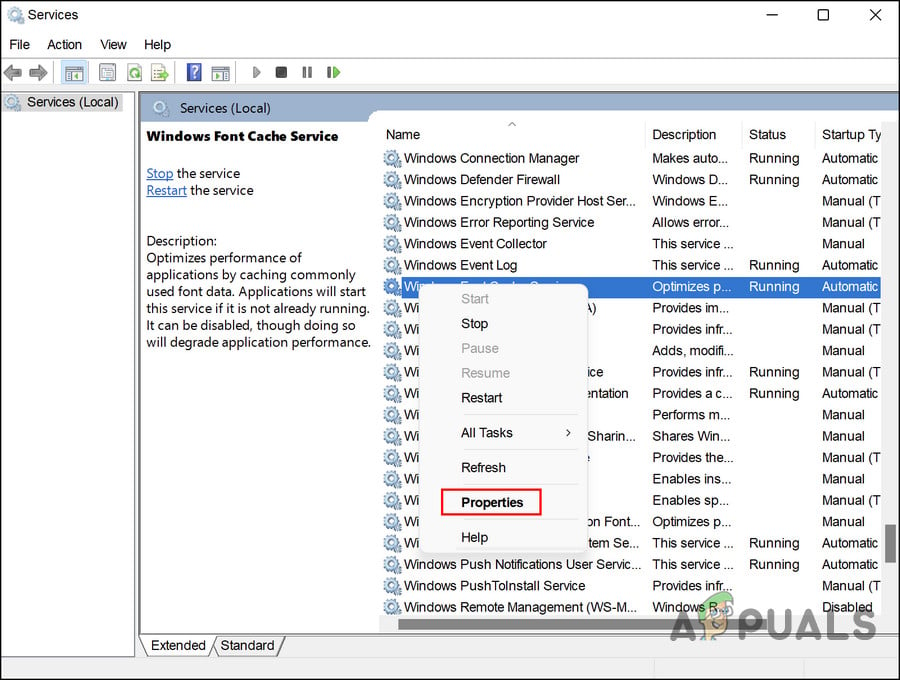
Choose Properties from the context menu - Next, click on the Stop button and expand the dropdown for Startup type.

Stop the Windows Font Cache service - Choose Disabled from the context menu.
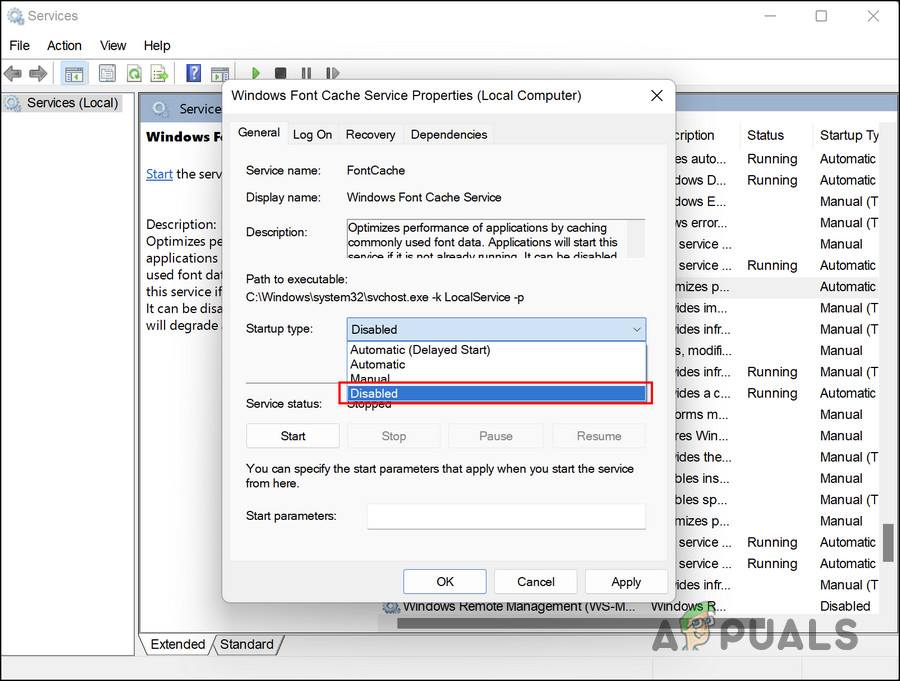
Choose to disable the service - Click Apply > OK to save the changes.
- Next, access the properties of the Windows Presentation Foundation Font Cache 3.0.0.0 service in the Services window.
- Stop the service and change its Startup type to Disabled as well.
- Once done, navigate to File Explorer and head over to the location mentioned below.
C:\Windows\ServiceProfiles\LocalService\AppData\Local\FontCache
- Inside the FontCache folder, select all the contents present inside and right-click on any one of the items.
- Choose Delete and then confirm your action to proceed.
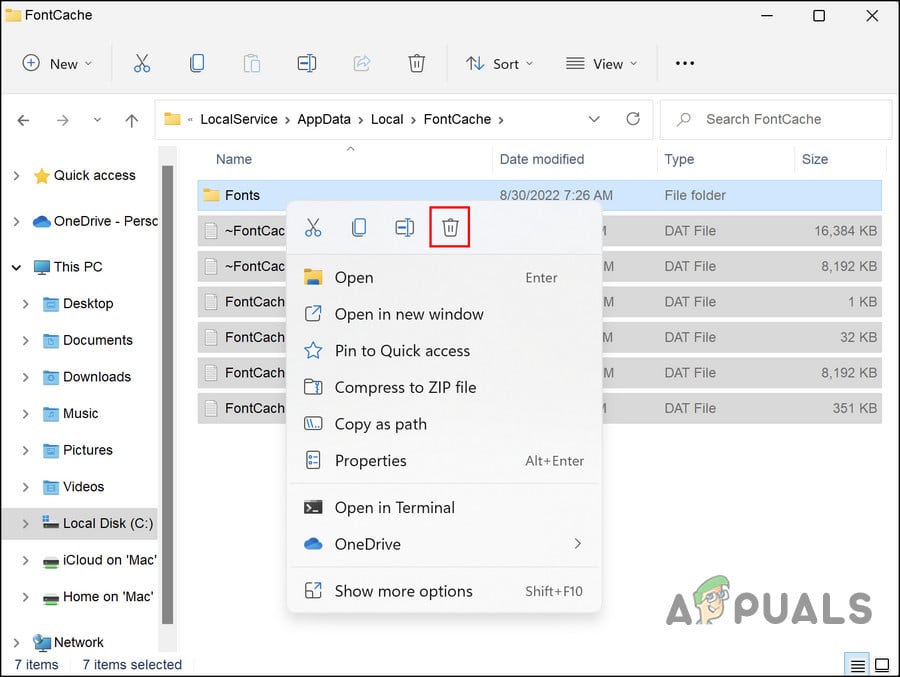
Delete the files - After that, head over to the following location in File Explorer:
C:\Windows\ServiceProfiles\LocalService\AppData\Local
- Delete the FontCache3.0.0.0.dat file here.
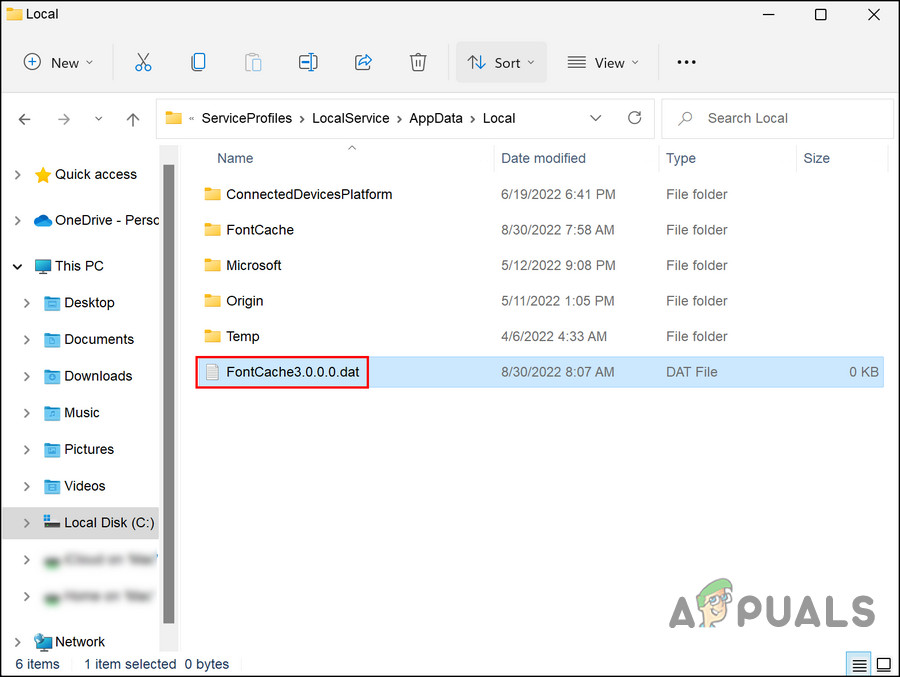
Delete the FontCache3.0.0.0. dat file - Now, head over to the following location:
C:\Windows\System32\
- Delete the FNTCACHE.DAT file here.
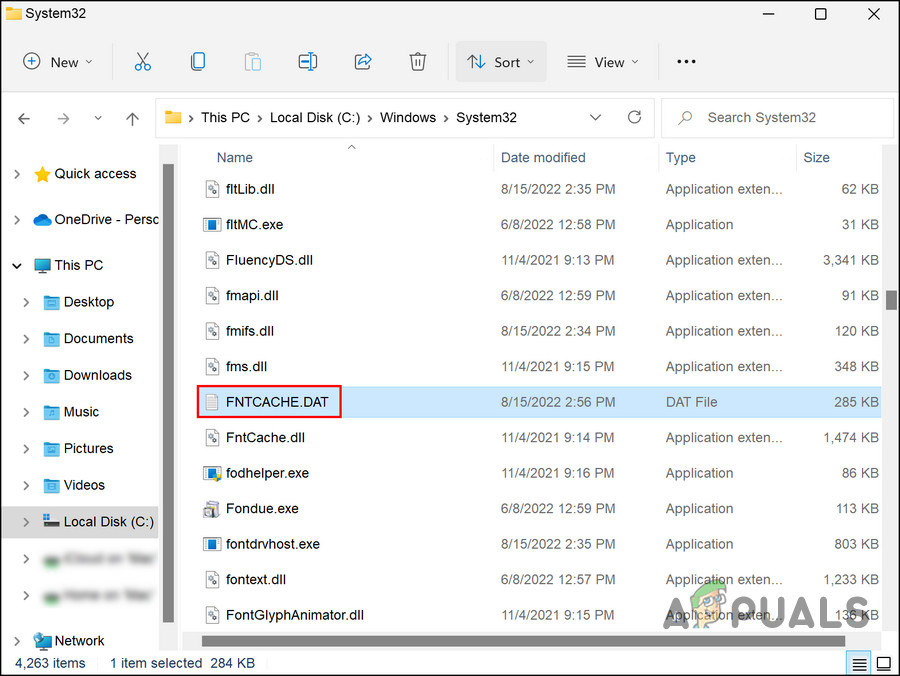
Delete the FNTCACHE.DAT file - Next, restart your PC. Upon reboot, open Run by pressing Win + R.
- Type services.msc in the text field and click Enter.
- Launch the properties of the Windows Font Cache Service and switch the Startup type to Automatic back again.
- Do the same for the Windows Presentation Foundation Font Cache 3.0.0.0 service and exit the Services window.

Set the startup type to automatic
You now have successfully rebuilt the cache. Go ahead and check if the Segoe UI Fluent Icon issue is resolved.
2. Run System Scans
Your system might also be infected with a corruption error that is causing the system components to act up. If this scenario is applicable, then the best way to resolve the problem is by making use of the built-in troubleshooting utilities within the system.
The two most powerful and efficient utilities that can help you, in this case, are the System File Checker (SFC) and Deployment Image Servicing and Management (DISM). You can run both utilities using the Command Prompt.
They will scan the system for potential issues and fix the problems identified without much user involvement.
Here is all that you need to do:
- Press Win + R together to open Run.
- Type cmd in the text field of Run and press Ctrl +Shift + Enter to open Command Prompt with administrative privileges.
- Inside the Command Prompt window, execute the command below.
sfc /scannow
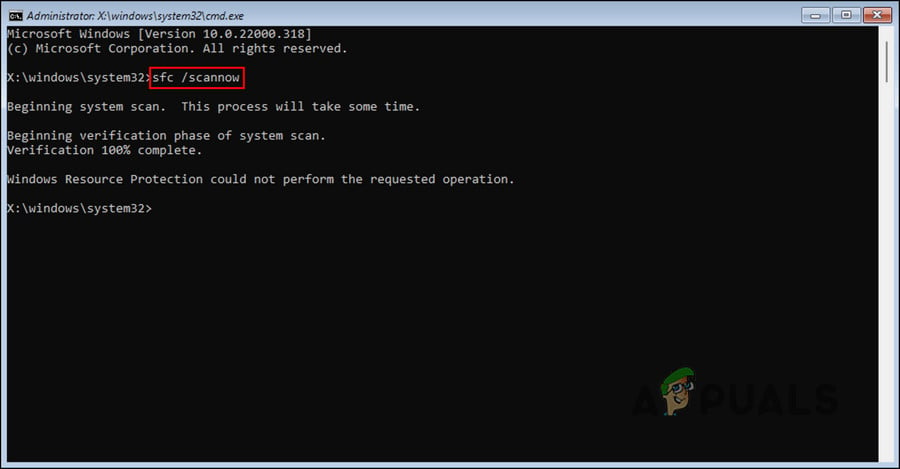
Execute the SFC command - Once done, proceed with executing the following command:
DISM /Online /Cleanup-Image /RestoreHealth
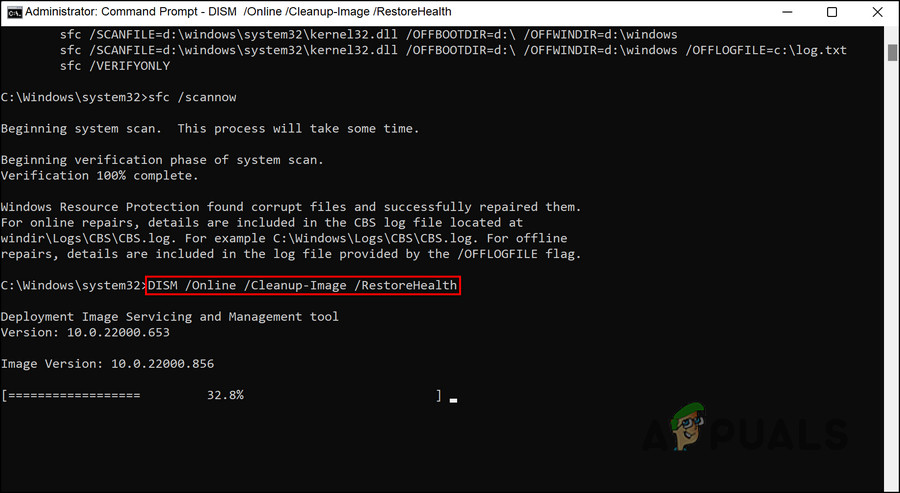
Execute the DISM command
Wait for the command to execute and check if the issue is resolved.
3. Reset Default Font Settings
In case the problem is arising due to incompatible settings, you can reset the settings and preferences to default to fix the issue.
Here is how you can do that:
- Type Control Panel in the search area of the taskbar and click Open.
- In the Control Panel window, set the View by category to Large icons.
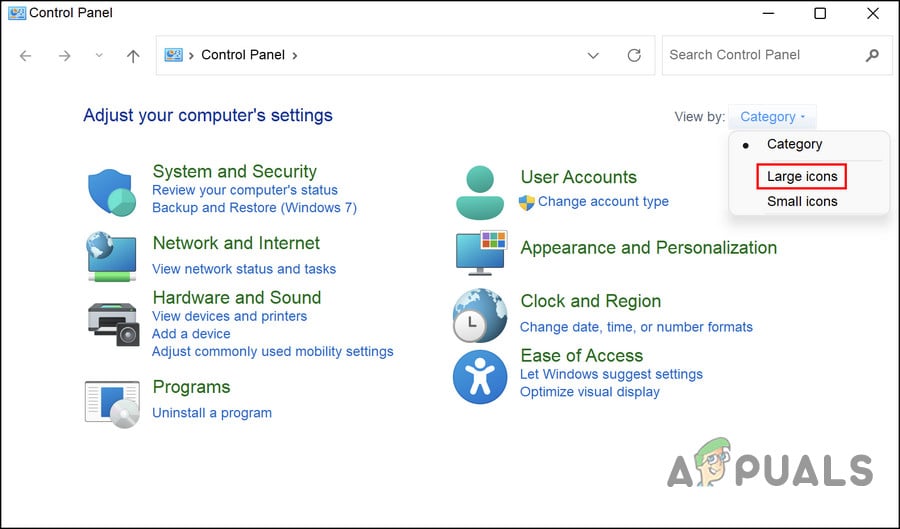
Change the View by category to Large icons - Click on Fonts.
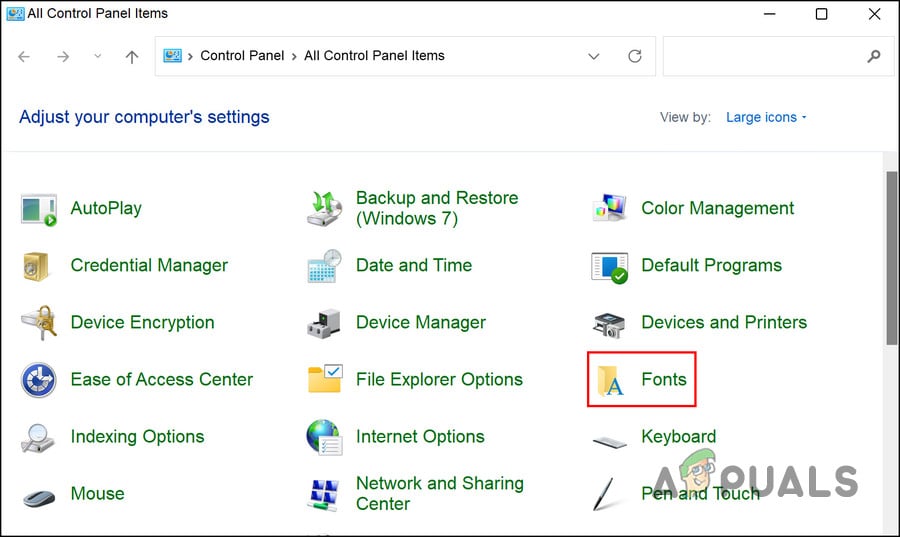
Click on Fonts - Now, click on Font settings.
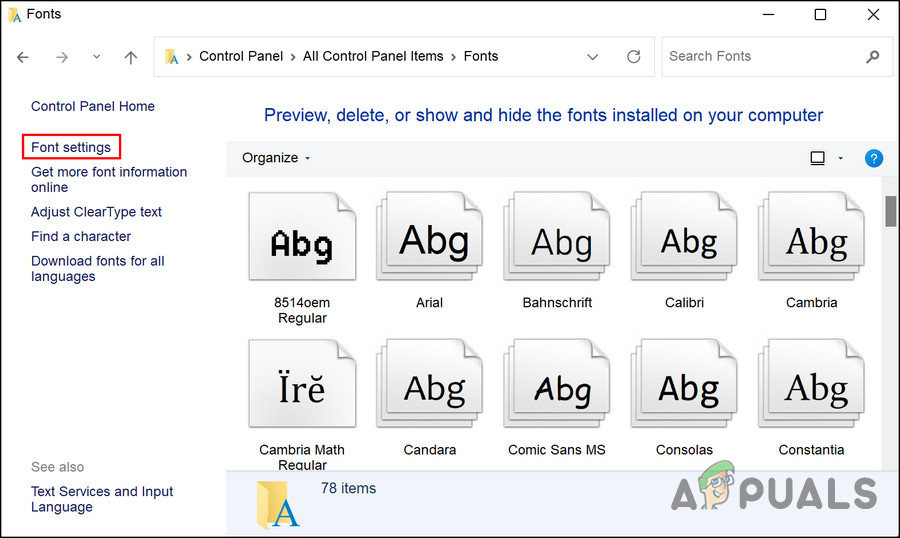
Click on Font settings - Hit the Restore default font settings button and wait for the process to complete.
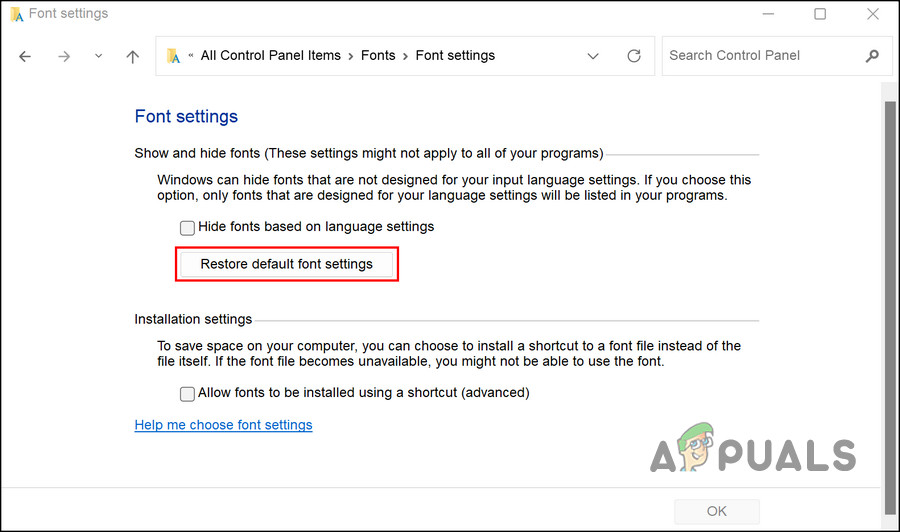
Restore the default font settings on Windows - Once done, restart your computer.
Hopefully, upon reboot, you will no longer face the problem with the Segoe UI Fluent Icon.





